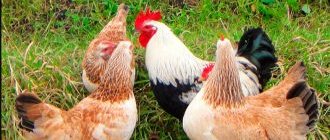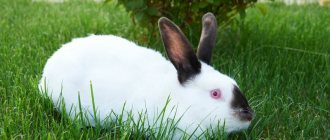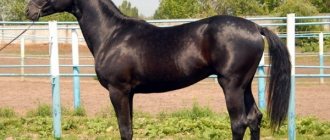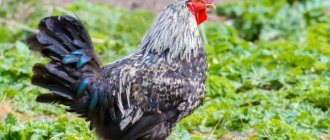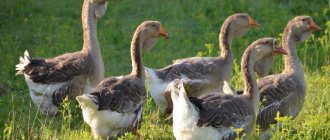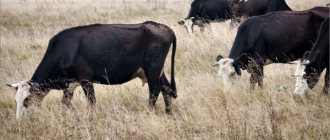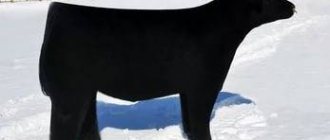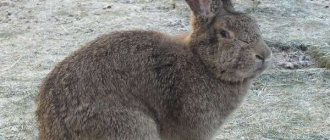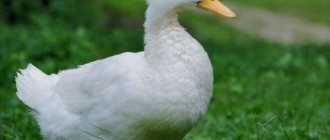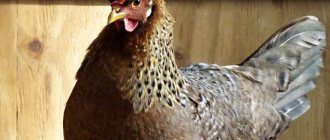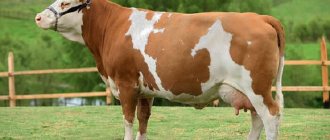Origin and prevalence
The Bestuzhevskaya breed of cows is an excellent option of domestic quality, the oldest and hardiest.
The suit was crossed by Boris Makarovich Bestuzhev in 1780 in the village of Repyevka, and it was named after the breeder. It was based on the Dutch, Shorthorn, Kholmogory and other breeds, and each gave only the best to Bestuzhevskaya. The animal received approval in 1868 due to its improved meat and dairy performance. Before this, Bestuzhev bred horses, and his experience in this helped him create cattle unprecedented for that time. Already in 1990, a million individuals were found on both private and public farms.
The narrow breeding area is a minor drawback. They are common in the Samara region, as well as in Tatarstan and Bashkortostan.
Pros and cons of the breed
Bestuzhev cows and bulls are bred both in private farmsteads and farms, and in large farms. This is explained by the undoubted advantages of the breed over many others:
- strong immunity and resistance to tuberculosis, leukemia and other common pathologies;
- quick and easy adaptation to any climatic conditions and habitats;
- simplicity of keeping and unpretentiousness of animals in feeding;
- rapid growth rates of young animals;
- precocity of females;
- excellent meat characteristics and quality of meat products.
At the same time, there is a disadvantage in breeding animals, which is the relatively low milk yield. However, they can be significantly improved by crossing with dairy breeds and good quality feeding and complementary feeding with concentrates and fodder vegetables.
Bestuzhev breed of cows - characteristics
Type – milk and meat.
Advantages:
- Cattle are famous for their extreme unpretentiousness and endurance.
- They are immune to diseases, they have immunity to such dangerous diseases as tuberculosis and leukemia.
- Excellent reproductive function.
- The climate of Russia goes well with this breed.
- Can eat roughage.
- In winter they can withstand frosts, in summer – heat up to 27 degrees.
Flaws:
- Sabreness of the hind limbs.
- Roof-shaped sacrum.
- Low level of milk yield.
The lifespan is approximately 16–17 years in household farming, and 13–15 years in farming.
Advantages of the breed
Bestuzhevsky cattle are zoned for the Volga region and have many advantages:
- excellent meat and stable milk qualities;
- practically insensitive to infectious diseases;
- has strong immunity;
- cows have a low level of gynecological problems;
- the incidence of leukemia is below 1%;
- easily tolerates both extreme heat and frost;
- well adapted to any type of pasture;
- unpretentious to feed.
Bestuzhev cattle are of great value for Russia, but only a small proportion of farms breed them. In many farms, Holsteinization and Simmentalization of this breed occurs. But for a private farmstead, the Bestuzhev cow is ideal: it is unpretentious, undemanding to feed, and at the same time shows a good level of milk yield throughout the entire lactation.
Appearance of the breed
The color is often red, but there are representatives with white spots on the body and udder.
External features:
- The physique is large.
- Light head of medium size.
- Large ivory colored horns.
- Short neck with unsightly folds.
- Broad chest with developed rib cage.
- Straight back and wide lower back.
- The udder is voluminous, cup-shaped.
- Low limbs, standing firmly on the surface.
- Elastic skin.
Size and weight of representatives:
- An adult cow weighs from 500 to 800 kg, height up to 132 cm at the withers.
- Bulls weigh from 800 to 1200 kg, height up to 140 cm at the withers.
Description
Cows of the Bestuzhev breed have a red color of varying intensity - from light to dark red. The standard allows white markings on the body. Typically, light spots are located near the udder and legs or on the head of the animal. Bestuzhev cows have a black nose.
Description of the Bestuzhev breed cow
This cattle has the following characteristics:
- The head is dry, neat, of medium size.
- Neck with folds, compact.
- The horns are large, powerful, light in color.
- The chest is powerful and well developed.
- The back is straight, the loin is large.
- The udder is cup-shaped and of medium volume with widely spaced nipples.
Calves are born weighing 30-35 kg. Adult cows weigh 480-560 kg, and bulls from 700 kg.
Reference! The slaughter yield for fattening bulls is 58-60%.
Young animals at 6 months have a body weight of 160-180 kg. With a balanced diet, one-year-old bulls of the Bestuzhev breed easily reach a weight of 500 kg. Record bulls have a body weight of more than 1 ton.
Exterior disadvantages:
- weak hock joints;
- incorrect foot placement;
- interception behind the shoulder blades;
- asthenic physique;
- vicious form of the sacrum.
Bulls that received low marks for exterior during grading are, as a rule, not used for breeding.
Content Features
Resistance to temperatures - cows are quite patient with the changing characteristics of Russia. Thanks to the breeding of Bestuzhev cattle in this area, they tend to be resistant to cold and heat.
Specific requirements for maintenance - they will not cause much trouble, cows and bulls adapt well to new conditions. Main requirements:
- Clean room.
- Clean at least once a week using a special product.
- The humidity level should be up to 66%.
- Warm housing with access to drinking water.
- Walk every day; in mild frosts they should be outside for at least two hours.
Rules of maintenance and care
The breed does not require special maintenance conditions. Tolerates heat and frost well, easily adapts to temperature changes.
Summer playground
It is equipped for free walking of animals in the summer during the daytime. The area is calculated so that each cow has 15 square meters. The site must have a strong fence so that animals cannot jump over or break it. A gate is installed for entry.
Additionally, the site is equipped with a canopy for animals to rest from the summer heat, feeders and drinking bowls.
The floors on it must be level; an earthen area without holes and hummocks is acceptable so that the animal is not injured. A walkway is installed on the south side of the barn to protect the animals from the wind. Bestuzhev cows can withstand heat up to +27 °C without stress.
See also
Description and characteristics of Santa Gertrude, keeping cows of this breedRead
Arrangement of the barn
The room for animals is made warm and bright, the floors are made smooth, with a slight slope for urine drainage. Ventilation is required in the barn to eliminate moisture. Feeders and drinkers are mounted at a height of 30 centimeters from the floor and equipped with high sides so that the food does not crumble and water does not spill. Containers should not have sharp corners, otherwise animals may be injured. The barn has separate pens for bulls, calves and sick animals. Feeders and drinkers are made from materials that are easy to clean. Straw is used as bedding.
Conditions of detention
In order for the livestock to be strong and productive, nutrition must be balanced and include vitamins and mineral supplements. Systematic examinations by a veterinarian and routine vaccination of animals are required. Cows are brushed daily with a stiff brush, especially contaminated areas are washed with water. This is done 1-1.5 hours before milking. In stalls they tie tightly, preventing the rope or chain from injuring the animal.
Expert opinion
Zarechny Maxim Valerievich
Agronomist with 12 years of experience. Our best country expert.
Ask a Question
Important: to keep the animal calm, you should milk the cow at the same time, and have special clothes for milking.
At each milking, the udder is washed with soap, wiped dry, lubricated with cream and massaged. These actions are necessary to protect the animal from disease. Bestuzhev cows winter in a barn. If the frosts are not too severe, they are taken out for walking every day for 1-2 hours.
Regular cleaning of stalls and equipment
Straw is used as bedding. It is changed when it gets dirty. Manure should be removed daily, preferably 2 times a day. With the accumulation of ammonia released from urine and manure, indoor humidity increases and the risk of cow disease increases. Drinking bowls are rinsed daily, and clean water is used to water cows. Once every 3-5 days, feeders and drinkers are treated with a hot 2% baking soda solution for disinfection.
Breed nutrition
Type of food depending on the season:
- In summer, it is enough to release the animal around the site; they feed on grass and shrubs.
- In winter, it is worth feeding hay, vitamin complexes, root vegetables and special feeds.
Healthy Supplements
- pay attention to vitamin A, which is contained in plant food in the form of carotene;
- D, obtained when walking in sunlight;
- for protein supplements and mineral complexes containing copper and calcium.
Look at the animal to see what the individual needs, consult with veterinarians to choose the most suitable complex. And do not overfeed them, so as not to cause problems with the gastrointestinal tract.
Important
Feed young animals from 30 days to one year with hay and concentrates, and after one and a half years add food waste.
The American method of raising cubs has also proven itself: young individuals are kept with adults on suction.
Pay attention to the pasture type of nutrition.
Feed heifers on an intensive schedule.
Daily ration
Be sure to include limestone, nutritional supplements, fish oil with other medications in your diet. Yeast would also be a great addition.
For cows
| Type of feed | Amount of feed for milk yield in kg | |||
| 9 | 13 | 16 | 20 | |
| Meadow hay | 8 | 8 | 10 | 12 |
| Spring straw | 4 | 4 | 2 | – |
| Potato | 2 | 4 | 6 | 8 |
| Carrot | 2 | 2 | 4 | 5 |
| Food waste | 6 | 8 | 10 | 10 |
| Cake, bean flour | – | – | – | 1 |
| Salt | 0,055 | 0,07 | 0,09 | 0,105 |
For the bulls
| Feed in kg | Bull mass in kg | ||
| 600 | 800 | 1 thousand | |
| Cereal hay (foxtail, fescue, bluegrass) | 10 | 11 | 13 |
| Combined feed (oats, wheat, barley, salt) | 2,8 | 2,9 | 3,0 |
Feeding and watering animals
Bestuzhev cows are fed 3 times a day. Animals are provided with free access to water. A cow drinks 130-150 liters of water per day, a bull - up to 200 liters. You need to feed at the same time.
Summer grazing on a pasture
In summer, the livestock is on pasture during daylight hours. Animals should have free access to a watering hole with running, clean water.
Important: it is necessary to ensure that there are no poisonous herbs on the pasture (henbane, crow's eye, aconite, foxglove).
Animals should not be grazed in the dew or immediately after rain; in the fall it is necessary to ensure that they do not eat frozen grass, as they will have problems with digestion. They are gradually transferred to pasture mode over 7-10 days.
See also
Where and in what natural areas do musk oxen live, what they look like and what they eatRead
Feeding diet in winter
In winter, cows are fed hay and silage. The diet includes vegetables (apples, carrots, potatoes), mixed feed, and food concentrates. Concentrates can be given dry or diluted with water. Mineral supplements (salt, chalk) are required, bone meal, fish oil, and special vitamin complexes are given. The amount of feed depends on the sex, age, and condition of the animal.
Vegetables must be clean; do not give the cow rotten or frozen products. Salt and chalk are placed freely available in the barn, next to the feeders. In severe frosts, drinking water should be heated. It should have a temperature of +14-16 °C.
Calving Features
The maturation period is from the year when the heifer’s weight reaches 300–350 kg, calving takes place without pathologies or deviations.
Interesting
The reproductive period begins at one and a half years and lasts up to 11 years. Pregnancy takes 9 months.
Post-calving care:
- Drink warm water after 30 minutes.
- Wash the posterior peritoneum, limbs and udder with soap and water.
- Lay down clean straw.
- Milk the cow a little and give the colostrum to the calf, giving it water every hour. After each feeding, wash the buckets and rinse with hot water.
- For the first week, feed the cow porridge made from oatmeal and bran.
- Over the course of a week, gradually introduce the cattle to normal food.
Reproduction
Such cows are early maturing, their childbearing age begins at 15 months. The period of preparation for fertilization lasts 75 days, while in females of many other breeds it lasts for 83-133 days. Both pregnancy and calving usually occur without complications, and cows do not require obstetric assistance. It is rare, but births of twins and triplets do occur.
Healthy, young individuals, carriers of all the characteristics of the breed, are selected for the tribe. Bulls that have one or another defect in appearance will never be used for breeding.
Important! The reproductive age of Bestuzhev breed cows lasts up to approximately 11 years. Pregnancy lasts 9 months.
After the cow has calved, the following activities are required:
- After about half an hour, offer the cow clean water.
- It is advisable to wash off all blood and mucus from the extremities, as well as from the peritoneum, with warm soapy water.
- Replace the bedding with more clean straw.
- Try to milk a small amount of colostrum and give it to the calf to drink; this should be done often in the first day after calving.
- For the first 7 days after calving, it is advisable to give the cow oatmeal and steamed bran.
- In the second week, it is allowed to switch the animal to hay and a regular diet.
What to look for when purchasing
Horns - they should be white without a hint of yellowness.
The skin is red in color without bedsores or abrasions.
The teeth are light in color, with healthy pink gums.
Hooves are clean, well-groomed, without cuts or corns.
The udder is cup-shaped, light pink in color, without swelling or injury.
Joints – pay attention to how the animal moves, whether there is any side bending or lameness.
Exterior defects – medium build with developed muscles and milk production, red color.
Breed standard
Based on exterior characteristics, Bestuzhev cattle were bred for maximum adaptation to the conditions and food supply of the middle Volga region. Also, these animals had to combine excellent dairy and meat qualities. The selection and improvement of the breed by foreign bulls, carried out over centuries, significantly influenced the appearance of the cattle.
| Place and time of withdrawal | in the 18th century in the Ulyanovsk region. |
| Color and exterior features | medium-built animals with developed muscles and milk production characteristics. The color is red or red-motley. |
| Live weight | in cows 450-600 kg, rarely reaching 700 kg. Bulls up to a ton, more massive animals are less common. |
| Measurements | in cows the height at the withers is 130-140 cm, in bulls – up to 160; the girth behind the shoulder blades is 180-200 cm, and for bulls – up to 220 cm. |
| Productivity direction | cows of mixed productive use; animals with more pronounced meat or dairy directions are rarely found. |
| Milk yield | 4000-6000 kg of milk starting from the third lactation. Fat content 3.7-4%, protein content 3.2-3.4% |
| Record figures | The Bashkir cow Basnya gave more than 10 tons of milk with a fat content of 3.6% during lactation. |
Young animals and bulls
At birth, calves are small - 30-35 kg, rarely reaching 40 kg. This allows you to avoid complicated births and subsequent pathologies. The safety and yield of young animals is high - more than 95%. The main characteristic of purebred calves of this type is high growth rates in the first months of life, superior to other breeds. This contributes to the high safety of juveniles and their immunity to a number of common diseases - dyspepsia and bronchopneumonia.
Later, development slows down somewhat, but in general, the average daily weight gain remains at the level of 700-900 grams. At six months, heifers reach a weight of 140-160 kg, and bull calves can weigh up to 180. The first insemination is carried out at 14-16 months, by this time the heifers gain weight up to 300-330 kg.
Bulls of the Bestuzhev breed are characterized by a mass of 800-900 kg; animals rarely exceed a ton. This is a strong cattle, with a heavy constitution, developed muscles and good fat deposition. The head is massive, of medium length with a wide forehead. The neck is large with pronounced folds.
Cows
Adult dairy cattle show mixed meat and dairy characteristics:
- weight from 450 to 600 kg, meat subtype can exceed 700 kg;
- milk yield in breeding farms reaches 4500-6000 liters;
- fat content is good - over 3.7%, often more than 4%;
- udder of good development, with a pronounced milky surface, cup-shaped;
- the head is dry, shortened with a narrow forehead and developed horns;
- the neck is short;
- flat back with a height at the withers and sacrum up to 135 cm;
- well-developed chest – more than 40 cm wide and up to 2 m in girth behind the shoulder blades;
- the limbs are low, strong, with a metacarpus girth of up to 20 cm.
Sources
- https://fermers.ru/porody/krs/bestuzhevskaya-korova
- https://www.proselhoz.ru/zhivotnovodstvo/korovy/korovy-bestuzhevskoj-porody
- https://fermilon.ru/hozyajstvo/zhivotnovodstvo/korova-bestuzhevskoj-porody-foto.html
- https://villaved.ru/zhivotnovodstvo/korovyi/bestuzhevskaya-poroda.html
- https://PoFerme.com/zhivotnye/korovy/poroda/kombinirovannye/bestuzhevskaya-harakteristika.html
- https://GoFerma.ru/zhivotnovodstvo/korovy/bestuzhevskaya-poroda-bykov.html
- https://vetugolok.ru/skot/korovy/bestujevskay-poroda.html
Diseases of the Bestuzhev breed
For a more detailed study, consider them in table form
| Name | Signs | Treatment |
| foot and mouth disease | An extremely contagious disease that can spread to humans. Symptoms:
| Iodine with acetic acid, as well as manganese, are used on ulcers. The hooves are coated with bleach or birch tar. Vaccination for this disease is mandatory within two years after one animal becomes ill. |
| Smallpox |
| Boric ointment is an excellent solution for treatment. The rash on the udder is treated with cotton wool and collodion. A vaccine is given to the entire herd. |
| Brucellosis | Pregnant animals are the first to be infected. Spontaneous miscarriages may occur. Symptoms:
A special study will help establish the disease. | Cattle infected with brucellosis must be slaughtered. Every three years, the entire herd must be checked for this disease. |
| Rabies |
| If these symptoms occur, you should notify your veterinarian as soon as possible, as this disease cannot be treated. If rabies is confirmed, the cow should be sent for slaughter and the body for destruction. |
| Milk fever |
Cows with a long lifespan and highly productive animals are susceptible to this disease. | A method is used when air is pumped into the udder from a special apparatus. Sometimes there is a method of injecting glucose into a vein. Prevention - administer vitamin D the day before calving, and a sugar solution 7 days before calving. |
| Mastitis | The disease develops during an injury to the udder. Symptoms:
| The veterinarian prescribes antibiotics. Folk remedies involve rice starch. For prevention, the udder is washed and massaged before milking. |
| Gastroenteritis | The disease is typical for calves that have switched from dairy to plant-based feed. Symptoms:
| Do not feed the animal for 1.5 days after infection. Give a laxative or castor oil 50 to 85 ml twice a day. Drink flaxseed or oatmeal broth, as well as hay and oatmeal. |
Never let an animal become sick; only a veterinarian can diagnose and treat as required. If you encounter something unknown to you, call a veterinarian and listen to his recommendations. The key to the health of your pets is observation and participation, only you can help them.
Conditions for keeping cattle
Keeping Bestuzhev cows will not cause problems for the owners - the cows are unpretentious and quickly acclimatize to new conditions.
The main condition is the cleanliness of the room; Complete cleaning using special products is carried out at least once a week. Another important factor is maintaining a high level of humidity in the place of residence - up to 65%. In winter, cows need a warm room with free access to drinking bowls. 10-20 m² of space is allocated per herd representative. Walks continue in winter; in mild frosts, cows should spend at least three hours outside every day. To avoid widespread infections, the herd should be inspected daily, and if necessary, seek help from veterinarians. Violation of the regime is undesirable and has a negative impact on the health of livestock.
The Bestuzhev cattle breed is undemanding; the breeding process is facilitated due to the good endurance and fertility of the cows. The breeding requirements are as follows:
provision of high-quality summer playground; spacious place to live in winter; special attention to the maintenance and diet of pregnant heifers; proper feeding of calves; Regular health checks of livestock.
Compliance with simple requirements guarantees good weight gain in newborns and a rapid increase in the number of individuals in the herd.
Bestuzhev cows are unpretentious and quickly acclimatize to new conditions
Where can I buy the Bestuzhev breed?
- LLC AF "Mir", located at the address - Republic of Bashkortostan, Blagovarsky district, Yazykovo village, Drunenkova street, building 29. Telephone 8-347-472–10-31.
- LLC Breeding plant named after. Krupskaya, located at the address - Republic of Bashkortostan, Dyurtyulinsky district, Mayadyk village, Gorshkova street, building 2. Phone 8-347-176-93-45.
- SEC "New World", located at the address - Republic of Bashkortostan, Bakalinsky district, Buzyurovo village, Shkolnaya street, building 28.
- "Ecofazenda", located at the address - Moscow region, Leninsky district, Misailovo village, Pervomaiskaya street. Phone 8-964-772-00-79, 8-926-077-16-00.
- SEC "Frunze", located at the address - Ivanovo region, Rodnikovsky district, Taimanikha village, Molodezhny village, house 20. Telephone (fax) 8–493-364-33-38, 8-905-108-58-26.
Conditions for keeping cattle
Keeping Bestuzhev cows will not cause problems for the owners - the cows are unpretentious and quickly acclimatize to new conditions. The main condition is the cleanliness of the room; Complete cleaning using special products is carried out at least once a week. Another important factor is maintaining a high level of humidity in the place of residence - up to 65%.
In winter, cows need a warm room with free access to drinking bowls. 10-20 m² of space is allocated per herd representative. Walks continue in winter; in mild frosts, cows should spend at least three hours outside every day. To avoid widespread infections, the herd should be inspected daily, and if necessary, seek help from veterinarians. Violation of the regime is undesirable and has a negative impact on the health of livestock.
The Bestuzhev cattle breed is undemanding; the breeding process is facilitated due to the good endurance and fertility of the cows. The breeding requirements are as follows:
provision of high-quality summer playground; spacious place to live in winter; special attention to the maintenance and diet of pregnant heifers; proper feeding of calves; Regular health checks of livestock.
Compliance with simple requirements guarantees good weight gain in newborns and a rapid increase in the number of individuals in the herd.
Bestuzhev cows are unpretentious and quickly acclimatize to new conditions
Origin
The breed was named after the Russian landowner-breeder Bestuzhev, who at the end of the eighteenth century brought the Shorthorn meat breed to Russia from Europe, with which he conducted crossbreeding experiments. He mixed the genotype with genes from local varieties, and then carefully selected the highest quality crosses for further work. As a result, a large breed was obtained, resistant to serious common diseases and characterized by good productivity characteristics.
The bred breed quickly gained popularity and became widespread in the Middle Volga region. At the beginning of the twentieth century, its representatives began to be purchased by large farms for modernization and profit from breeding. Currently, the main livestock of the improved variety is concentrated in the Volga region, where the climate most suitable for it is observed.
The Bestuzhev breed of cows was developed by experimentally crossing the Shorthorn cow, which Bestuzhev brought to Russia from Europe.
This is interesting: Belgian Blue cattle breed
How was the breed formed?
The Bestuzhev breed of cows was formed in the 18th century on the lands of the present Ulyanovsk region. Primary crosses of beef and dairy cattle were improved by Kholmogory and Dutch red bulls. And complex selection work was carried out with the resulting hybrid animals. In order for the cows to produce fairly large volumes of milk yield, and the bulls to have good meat feeding characteristics, they were bred using the “inside” method. At the same time, the breed's cattle have become hardy and can withstand the local harsh climatic conditions very well.
Further, the “honing” of the breed took place at the Ulyanovsk and Samara breeding plants, where cows of this breed were mated with Dutch, Shorthorn and Wilstermarsh bulls. In the Samara and Ulyanovsk regions, in Bashkiria and Tatarstan there are the most of these cows. Modern cows and bulls are maximally adapted to the specific climate and food supply of the Volga region. Although the appearance of Bestuzhev cows has significantly transformed from the original one declared at the beginning of the twentieth century.
Meat breeds
Beef cows must ensure maximum weight gain with optimal, from an economic point of view, feeding.
Did you know? Most giant bulls currently live in the UK. For example, a Charolais bull, Field Marshal, weighs more than 1.7 tons and is 1.9 meters tall (according to 2008 data).
The signs of animal meat production are obvious:
- strong, rectangular build (side and top views);
- uniform development of the front and rear parts;
- powerful chest and developed hips;
- large size and tall;
- undeveloped udder in cows;
- thick skin.
Meat breeds
Limousine
French animals from the Limousin region, where their breeding began in the mid-18th century. The body is massive, with medium strong legs and a small udder. The neck is short, the head has a large forehead. The color of the skin is golden brown. Unpretentious and frost-resistant, with easy calving. Bulls are aggressive (as are calving cows raising a calf).
Read more about the Limousin cattle breed.
Charolais
The massive breed from France has been known since the 17th century. Actively crossed and selected for height and weight. A cow is much smaller than a bull. The color of the skin ranges from milky to brown. The body is rectangular, the neck has large skin folds. Animals grow up to 2 years, reaching a height of 1.6 m.
The weight of the record bull is 2 tons (the average is 1–1.6 tons). Cows gain up to 750 kg with a height of up to 1.55 m. Calves are born weighing up to 70 kg (minimum 30).
Important! High weight of calves often leads to birth injuries and high mortality rates.
Hereford
English cows have been known since the 18th century. Animals are red with white spots. The body is squat, with powerful legs and a wide back. Unpretentious in care, with stable immunity. Calves are characterized by high vitality. The meat is marbled and has excellent taste.
We recommend that you learn more about caring for Hereford cattle.
Kalmytskaya
These hardy animals are able to survive in arid climates with sudden temperature changes and poor food. The build is compact, with a wide back. The color is red with white spots, the coat is dense. They can be grazed year-round. The meat is red with yellow streaks and tasty. After calving, cows become aggressive.
Find out more about the Kalmyk breed of cows.
Belgian Blue
A breed with a characteristic appearance and unlimited weight growth. The animals are distinguished by hypertrophied muscles, thin skin and sparse blue-white fur. The character is calm, the immune system is unstable. Not suitable for northern regions. They require assistance with calving.
Important! To obtain optimal weight growth, it is necessary to adhere to special milk feeding for calves for up to 2 months.
Kazakh white-headed
The animals are well adapted to local conditions and were crossed with Hereford and Kalmyk individuals. The physique is strong, with massive hips and a wide back, Hereford color. Hardy and unpretentious, they tolerate harsh climates well. Meat with excellent taste, “marbled”.
Find out more about the Kazakh white-headed cow breed.
Calves are born weighing up to 27 kg and grow up to 1 kg per day. Cows gain up to 600 kg, and bulls - up to 1 ton. Meat yield - 60-65%, milk yield - up to 2000 liters per year with a fat content of 3.8%.
Galloway
The Scottish breed was developed in the 17th century. Black in color, occasionally dark brown or grayish yellow. The wool is voluminous, sheep-type, up to 20 cm long. Without horns. Withstands harsh climatic conditions. The cow is unpretentious in terms of diet and care, and is early ripening. Marbled meat of high quality.
Read more about the Galloway cow breed.
Aberdeen Angus
The breed was developed in Scotland in the 19th century. Hornless animals are black or red in color with short legs and pronounced meat shapes. The bones are thin. Animals quickly gain weight and take first place in early maturity and quality of meat. They can be outdoors even in frosty weather. Meat with excellent taste and marbling is considered the best choice for steaks.
Find out more about the Aberdeen Angus cow breed.
Bestuzhev calves
Young cows of the Bestuzhev breed are born miniature by the standards of the species, and rarely their weight exceeds the 35 kg mark, while cases are recorded where calves at birth reach a weight of 40 kg. Thanks to this feature of newborns, adult cows do not face pathological changes, as well as other problems that often accompany the birth process.
The Bestuzhev breed of cows bears small calves without problems, and as a result does not face psychological and physical injuries. At the same time, the cubs are born in good health and subsequently develop successfully. These words can be confirmed by statistical data that indicate that the survival rate of young animals exceeds 95%.
Good development and vigorous growth observed in the early stages of development after birth help ensure that calves survive and remain active. The period of rapid development slows down at the age of three months, which contributes to the normal formation of internal organs and systems. The Bestuzhev breed, already at the age of six months, is capable of gaining weight from 150 to 180 kg, depending on gender, but the key condition for achieving such indicators is a proper diet, which is rich in all the necessary nutrients and vitamins.
Prospects for cultivation
The production of meat and milk is considered a promising area in animal husbandry. The Swedish red and white breed meets the requirements of meat and dairy breeding. Bulls and cows are distinguished by early maturity, fertility, and health. The queens give birth to healthy, numerous offspring, and they produce a lot of fatty milk. The volume of average annual milk yield allows you to make raising cattle profitable and make a profit.
The meat of the Swedish breed is tasty and nutritious; animals can also be bred for meat. It contains fiber and fat in an optimal ratio. Meat digestibility is 95%. Bull calves can be slaughtered as early as 8-10 months; up to this age they are actively growing, then the growth rate decreases. For breeding, you need to select from the livestock the best individuals in all respects.
The Swedish red and white cattle breed is considered promising for farm and livestock breeding. Cows successfully combine valuable traits of dairy and beef cattle. If you organize the raising of cattle according to the rules, you will be able to bring the farm to a high level of income.
Productivity
The Bestuzhev breed of cows has a dual focus and cannot boast the same productivity as pure dairy cattle. Milk yield on private farmsteads averages 3000-3500 kg. At breeding farms, Bestuzhevkas produce 4000-4800 kg. The fat content of milk on private farms is 3.7-3.9%, on farms – 3.8-4%. In some cows this figure reaches 5-5.5%.
Reference! Bestuzhev cows have an excellent protein content in milk - from 3.3% to 3.5%.
The uterus of the Lenin breeding plant from Bashkiria produce more than 5000 kg of milk per lactation. The record-breaking cow Leah yielded 10,007 kg during her 4th lactation, and another queen, Basnia, milked 10,386 kg.
Important points when buying an Ayrshire cow
As stated above, the Ayrshire is a dairy breed purchased for the purpose of obtaining rich milk yield. The choice should be made in favor of a cow that:
- smooth and soft wool;
- firm gait;
- clear eyes;
- high activity and playfulness;
- the udder is well developed and cup-shaped. At the same time, an udder that is too large causes inconvenience to the animal, since it touches dry grass and debris, which can injure the cow. A good udder is horizontal and located at the level of the hock joint.
Average cost of an Ayrshire cow
The price of a cow corresponds to the place of purchase and the degree of purebred. Animals can often be purchased from private owners at a lower cost than from farm enterprises. The average cost reaches 100 thousand rubles. If you purchase several individuals, you can count on a good discount.
Specifics of breeding
Under conditions of normal adaptation, cows of this breed are able to begin high-quality reproduction in the shortest possible time. Having the right approach used in breeding processes allows you to obtain the weight gain of young animals at the optimal level, as well as significantly save on primary costs. The process of fattening calves of the Bestuzhev breed should begin a month after birth and continue until they are one year old. The following can be used as food during this period:
- hay;
- concentrates;
- silage.
When the bulls reach one and a half years of age, fattening occurs using hay, as well as enriching the daily diet with food waste. In addition, the use of the American system for raising young animals can be effective. It involves keeping calves in the same room with an adult, so that animals can suck milk as needed, supplementing the daily diet. The characteristics of this type of content indicate the emergence of a number of opportunities, but its implementation must be thought out and adapted to the existing conditions. American technology can also be applied to pasture cultivation.
Breed standards
Considering the relationship with the best breeds, the appearance of Bestuzhev cows meets all existing standards. The fact is that foreign bulls directly took part in the formation of the breed in question; its external characteristics are very attractive. Thanks to this, the average weight of a Bestuzhev breed bull reaches 1 ton on average, while females are capable of gaining weight up to 600 kg. Growth indicators for a bull are at the level of 1 m 60 cm, and for a cow - up to 140 cm.
The udder is characterized by excellent development and is also cup-shaped. A bull's head is massive, and there are several noticeable folds in the cervical region, while a cow's head is of average size and the presence of folds is often barely noticeable. The backs of these animals are smooth and massive, the limbs are strong and have good development indicators. The Bestuzhev breed of cows has massive and voluminous muscles. Breed standards suggest a predominance of motley-red or red color.
Breeding the described pets is excellent for producing meat or milk, and it is due to this versatility on an industrial scale that this species is widely used for both purposes. Proof of the effectiveness of this approach are numerous records that are recorded on specialized farms, where milk yield from one cow often approaches or even exceeds the mark of ten tons of milk.
